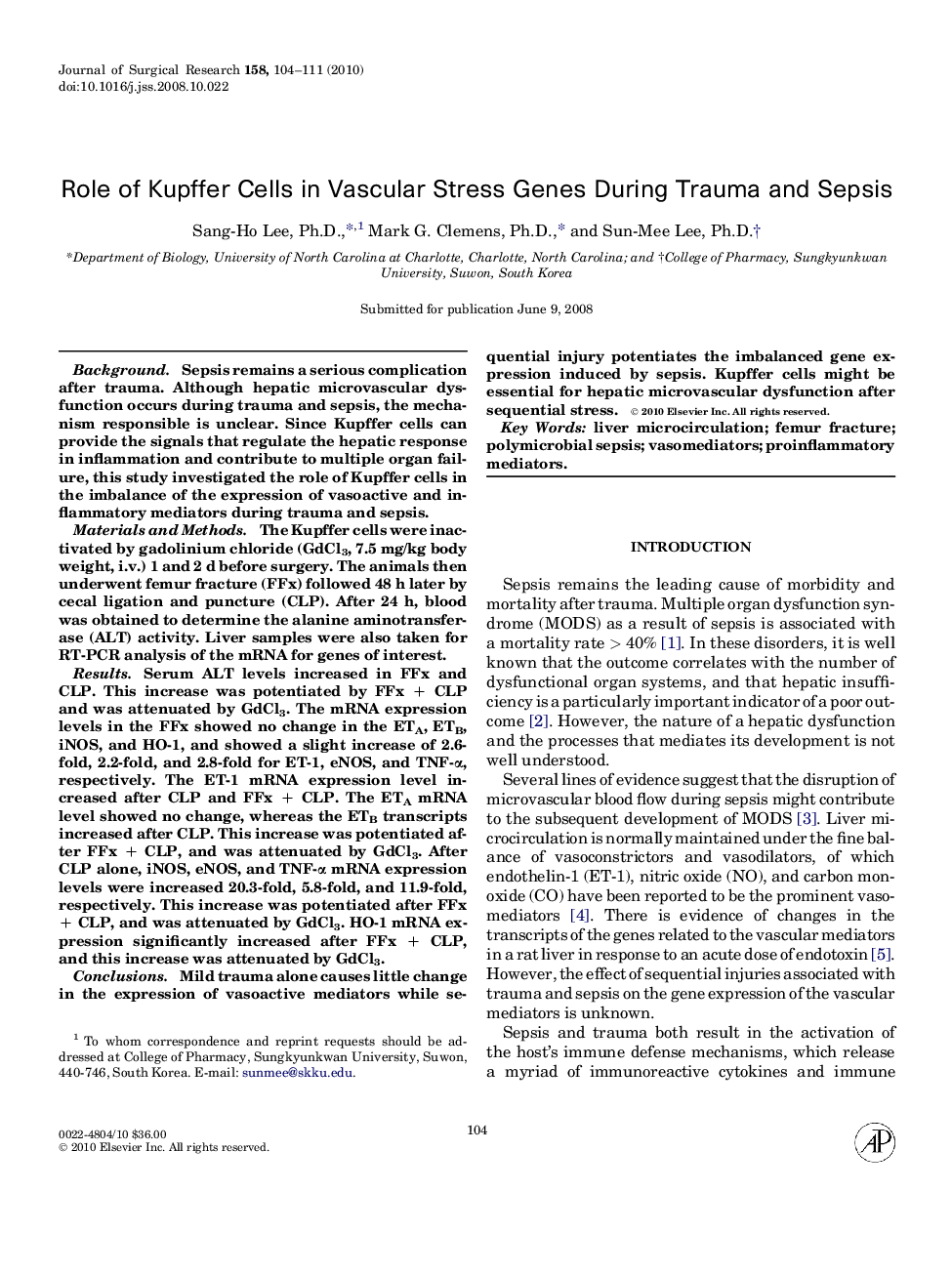| Article ID | Journal | Published Year | Pages | File Type |
|---|---|---|---|---|
| 4303333 | Journal of Surgical Research | 2010 | 8 Pages |
BackgroundSepsis remains a serious complication after trauma. Although hepatic microvascular dysfunction occurs during trauma and sepsis, the mechanism responsible is unclear. Since Kupffer cells can provide the signals that regulate the hepatic response in inflammation and contribute to multiple organ failure, this study investigated the role of Kupffer cells in the imbalance of the expression of vasoactive and inflammatory mediators during trauma and sepsis.Materials and MethodsThe Kupffer cells were inactivated by gadolinium chloride (GdCl3, 7.5 mg/kg body weight, i.v.) 1 and 2 d before surgery. The animals then underwent femur fracture (FFx) followed 48 h later by cecal ligation and puncture (CLP). After 24 h, blood was obtained to determine the alanine aminotransferase (ALT) activity. Liver samples were also taken for RT-PCR analysis of the mRNA for genes of interest.ResultsSerum ALT levels increased in FFx and CLP. This increase was potentiated by FFx + CLP and was attenuated by GdCl3. The mRNA expression levels in the FFx showed no change in the ETA, ETB, iNOS, and HO-1, and showed a slight increase of 2.6-fold, 2.2-fold, and 2.8-fold for ET-1, eNOS, and TNF-α, respectively. The ET-1 mRNA expression level increased after CLP and FFx + CLP. The ETA mRNA level showed no change, whereas the ETB transcripts increased after CLP. This increase was potentiated after FFx + CLP, and was attenuated by GdCl3. After CLP alone, iNOS, eNOS, and TNF-α mRNA expression levels were increased 20.3-fold, 5.8-fold, and 11.9-fold, respectively. This increase was potentiated after FFx + CLP, and was attenuated by GdCl3. HO-1 mRNA expression significantly increased after FFx + CLP, and this increase was attenuated by GdCl3.ConclusionsMild trauma alone causes little change in the expression of vasoactive mediators while sequential injury potentiates the imbalanced gene expression induced by sepsis. Kupffer cells might be essential for hepatic microvascular dysfunction after sequential stress.
